Contax G1D Rangefinder 35mm Film Camera + 90mm F2.8 Lens
Original price was: $500.00.$399.99Current price is: $399.99.
I really wanted to love the Contax G1, a camera that has a lot going for it. The combination of renowned Carl Zeiss optics, a stylish and sturdy titanium-clad body, and an affordable price makes for a very alluring package.
Sadly, even as a fervent Contax supporter, I discovered after using this camera that it's just not a good fit for me. I'll explain why.
Incredible optics at a fair price, according to Cliffs Notes
a sturdy construction, nice ergonomics, and stunning appearance
Small and dim viewfinder is terrible.
Although I had no focus problems, the autofocus system was noisy and slow.
will fit each individual differently. Must be put to the test to determine if it fits. Purchase a Contax G1 here.
Let's quickly review the G system's history before getting started:
Contax released the G1 in 1994, followed by the G2 in 1996. These cameras were advertised as premium models, with the G1 and 45mm combination costing nearly $4000 in modern currency.
The most significant improvements to the G2's design and technical aspects were its improved autofocus system and compatibility with some of the more recent G lenses. There is also a green label G1 model that is identical to the original but has been modified to allow it to use the full line of lenses.
Therefore, only the 16mm, 28mm, 45mm, and 90mm can be used with the original G1. not the later-released 21mm, 35mm, and 35-70mm. The non-green label version will be the most reasonably priced option if you're not interested in those last three.
When you consider the quality of the glass, the original G1 with the 28mm, which is the combination I tested, can be purchased for under $500 USD on eBay.
G1 Contax G1 / 800 Lomography
Contax G1 Features of the Contax G1 and Fuji Pro 400h
There's a good chance that if you're reading this, you're already familiar with this camera, but I'll still briefly go over some of its features.
The G1 can be operated both manually and fully automatically (with some quirks). It has autofocus, autoexposure, and auto wind, and in some ways resembles a point-and-shoot system with interchangeable lenses.
The camera has a meter that can be set anywhere between 6 and 6400 ISO and shutter speeds up to 1/2000s. As previously mentioned, there is also a manual focus mode. However, it is set using a dial on top of the camera body rather than the lens. In this mode, you can choose your distance and zone focus or use the display in the viewfinder to determine when you have locked focus on your subject. I steered clear of it and continued to use autofocus.
Canon G1
The shutter speed and focus dials are located on the top plate of the camera.
Utilizing a Camera
I wandered around the seafront for a couple of days with the Contax G1, shooting two rolls of Fuji Pro 400H and Lomography 800 film.
I thought the camera's handling was excellent. The ergonomics were excellent, and it had a nice weight to it. Additionally, I believe it to be among the best-looking 35mm cameras ever produced, and I would always be thrilled to wear it around my neck.
G1 Contax G1 / 800 Lomography
Lenses for the Contax G1 and the Fuji Pro 400H
I was only able to use the 28mm lens while testing the G1, and even though it's a little wider than the lens I typically use, I was still pleased with the performance. I wouldn't question the claim that the Carl Zeiss lenses for the G system are some of the best optics ever created for a 35mm camera.
I was astounded by the amount of detail that the 28mm Biogon was able to capture after scanning some of the negatives at full resolution with my Nikon Coolscan 9000. It's a fantastic lens, and I have no doubt that the other products in the lineup are equally impressive. This camera is more than capable if you're trying to get the most out of your 35mm film.
Carl Zeiss Biogon 28mm f2.8 Contax G1 Auto Exposure
Aperture priority was selected as the camera's operating mode, and the exposure compensation was set to plus one. The dial doesn't lock, though, and there have been a few occasions when I looked down and discovered that it had been moved to either plus two or minus two. However, aside from that, the exposures were excellent and the camera's built-in light meter appeared to be performing well.
Auto Focus
The autofocus system on this camera is one of its major flaws. You frequently hear conflicting opinions, with some people claiming to have missed numerous shots per roll and others saying they had no problems at all. Although I had no out-of-focus shots using the system, I didn't anticipate any problems given the kind of images I'm producing. Frequently, I focus on a distant subject—usually infinity—or a stationary subject in the foreground before recomposing.
Having said that, I would be wary of using the G1 for any kind of subject or image that involved movement or where speed was crucial.
Canon G1
This camera has a lot going for it, including great ergonomics, strong construction, gorgeous looks, and excellent optics. However, there was one particular aspect that really stood out and for me, ended up ruining the shooting experience.
The viewing device
Instead of having frame lines like a traditional rangefinder system would, this camera's viewfinder automatically adjusts to show you the field of view for each lens you attach. Approximately 90% of what you see is what you get, in general.
This was actually a welcome feature for me, someone who prefers an SLR, as I'm not a big fan of framing with lines. I prefer to only see the elements of my final image when looking through the viewfinder.
Contax G1 Optical System
Unfortunately, the viewfinder on this camera is one of the smallest and least inspiring ones I've ever used on a film camera. It's also very dim. It can be difficult to see through stray light, and your eye must be perfectly centered. All of those factors combined to create a shooting experience for me that wasn't particularly enjoyable.
What's interesting is that when I published my review on YouTube, I received a lot of conflicting feedback. Some people complained bitterly about the viewfinder, while others claimed it didn't bother them at all.
The Contax G1 and the Fuji Pro 400H
G1 Contax G1 / 800 Lomography
G1 Contax G1 / 800 Lomography
In conclusion, I'll reiterate that you should try this camera for yourself to determine whether it's a good fit or not.
It certainly has a lot going for it, especially when you consider the incredible lens lineup. However, now that I've had a chance to try it out, I regret not investing in it earlier.
It can produce excellent images, and for some people, it might be a perfect fit, but for me, the trade-off with the uninspiring shooting experience isn't worth it. I suppose I'd also be concerned about conceivable electronic problems, which, should they ever fail, might make the camera useless. But I suppose there will always be some level of risk when using an older film camera.
If you've been considering purchasing a Contax G1 or even G2, I hope this brief review helps clear up some questions. Of course, if you have any questions, feel free to leave a comment or contact me by email.
I would suggest eBay if you are interested in purchasing one. Just make sure the seller is reputable and has good feedback before you do business with them. You can find more information about the best places to buy film cameras online in my post titled "The Best Places To Buy Film Cameras Online."
Review of the Contax G1 - 35mm Point and Shoot Film Camera in 2022
The Contax G1 was arguably the most technologically advanced and feature-rich rangefinder interchangeable lens camera when Kyocera released it in 1994 [1]. In this Contax G1 review, we examine the expert point and shoot in more detail.
Contax g1 evaluation
The Contax G1 upped the ante by incorporating a number of electronic features and components at a time when all rangefinder cameras were mechanical. What does this suggest for customers? Well, it mainly translates to usability. Additionally, the camera's Carl Zeiss lenses ensured that there were no image quality compromises.
The Contax G1 has a stunning and sleek design that's not too difficult to work around. The body is able to display a premium appearance thanks to a titanium coating. This camera's autofocus feature is very useful and sets it apart from other strictly manual rangefinders. Additionally, the automatic film advance and rewind features make using the camera a breeze. Finally, the G1 includes TTL light and flash metering to help you get perfect exposures.
For whom is the Contax G1 intended?
The Contax G1 is a fantastic option if you're looking for a stylish rangefinder film camera and don't mind having some electronic features. There are no worries on that front either if you are aware of designs. The body is quite fashionable and fits the hands well.
The Contax G1 is small and reasonably portable, like any rangefinder camera. It becomes a stunning tool for street photography as a result. This camera is simple to use thanks to its automatic features, which include autofocus, automatic film advance and rewind, and aperture priority mode, among others. As a result, the Contax G1 won't let you down if you like convenience when you're out taking pictures because the learning curve isn't too steep.
Because the Contax G1's autofocus system is powered by a motor in the camera body rather than the lens, some noise is made during operation. Make sure you are comfortable with the noise level if you need to be quiet to complete your work.
Contax G1 only has one focus point in the center, so keep that in mind if you're buying it for the autofocus system alone. Do not anticipate ultra-quick autofocusing like that found in modern cameras. The autofocus is not always precise and moves along fairly slowly.
Contax G1 attributes
- a Contax G1 model
- Availability: 1994
- camera mount: G-mount for Contax
- Dimensions are 133 x 76.5 x 35 mm (5.24 x 3.01 x 1.38 in).
- 450 g in weight (16 oz)
shutter rate
Auto: 16 - 1/2000s - Bulb mode, 1 to 1/2000s manual
- ISO 6 to 6400
- Battery
- two lithium-ion 3V batteries (CR2)
viewing tool - Genuine image viewfinder and mounted lenses (zoom rangefinder)
1/100s is the flash sync speed.
Autofocus
When I first learned about a rangefinder with an autofocus feature, I was extremely excited. One of the reasons I purchased the Contax G1 was for this. After using the G1 for a while, I've discovered that the autofocus system is not particularly quick. It's possible that I'm a little spoiled by modern cameras, but it's a really nice feature to have in a rangefinder.
Working with the camera is still enjoyable in any case. Despite the focus not being quick, it completes the task more quickly than when I use manual focus. This could be the cause of my ability to use a roll of film much more quickly than when I use one of my other fully manual film cameras.
When using the Contax G1, you'll notice that as soon as you release the shutter button, the focus will reset to infinity. Some people may find this frustrating, especially if your subject distance does not change. However, the camera won't reset focus if you only partially release the shutter button after taking the picture.
Contrarily, the Contax G2 has a focus hold button on the back to address this problem. This is what I like to refer to as the back button focus. You can use the back button to independently focus on your subjects and press the shutter button to take pictures. To return the focus to infinity, just let go of the focus hold button.
However, the camera also has a dial at the top with preset focusing distances if you prefer manual focusing. I also observed that this dial is quite changeable, which could divert your attention. This is one of the few things about the Contax G1 that I really didn't like.
Visit our How To Use Manual Focus page if you'd like to learn more about manual focusing.
Metering
A center-weighted light meter that is already part of the Contax G1 does a respectable job. The camera also has an auto exposure lock (AEL) function if you discover that you overuse the focus and recompose technique.
Automatic actions
When it first came out, the Contax G1 wasn't afraid to brag about its electronic capabilities. Due to all the digital features, many purists may have detested the camera, but I don't mind them at all. I believe it simply makes the camera much more useful. But this emotion is entirely personal.
Consider how you load the film, for example. Simply insert the leader into the rolling mechanism and pop the roll into the back. After that, you're done after closing the back panel. The camera has a DX cartridge recognition feature that automatically sets the ISO value to the recommended level. If you do not want to use the film at box speed, you can easily override the ISO setting.
The auto experience doesn't stop here, either. You cannot advance the film in the camera after each exposure. The camera automatically moves on to the following frame after you take a picture. This feature is great because it helps me focus more on what's going on around me.
The Contax G1's automatic zooming viewfinder is yet another really cool feature. The viewfinder adjusts the frame by zooming in and out as you change the lens on the camera. I must admit, it's a really impressive feature.
Lenses
The Contax G series cameras' lenses are without a doubt their most notable selling point. These cameras' lenses, which are created by none other than Carl Zeiss, perform superbly. The images are well saturated, keep a lovely contrast, and are razor-sharp, as you would expect from a Carl Zeiss lens.
I adore my 45mm f/2 G Planar lens, which is the one I currently own. One could argue that this is among the best lenses ever created. With a full-metal design, the construction is sturdy. Even the aperture ring, barrel, mount, and filter threads are made entirely of metal with a titanium finish. In a nutshell, the lens screams quality.
I've grown accustomed to the 45mm focal length. I think the lens is pretty adaptable considering it falls between the 35mm and 50mm focal lengths. A wonderful company for me to wander the streets with.
All of the lenses produced for the Contax G series cameras can be used with either the G1 or the G2, with the exception of the 35-70mm f/3.5-5.6 lens, which is exclusive to the G2. The 21mm f/2.8 and 35mm f/2 lenses, on the other hand, require a modified Contax G1 to be used with them. A green label inside the film compartment can be used to identify a modified G1.
G2 versus Contax G1
Contax G1 was a great fit for my budget, so I purchased one for myself. In any case, the Contax G2 [2], which the company unveiled in 1996, is a capable G1 replacement. I've outlined the main variations between the two cameras below:
Contax G1 and Contax G2 features Shutter speed
- Auto: 16 – 1/2000s
- Manual: 1500 seconds
- Sync: 1/100s
- Auto: 16-1/6000s
- 4-1/4000s in manual
Sync: 1/200s
Dimensions: 139x80x45mm (5.5x3.1x1.8 in), 133x76.5x35mm (5.24x3.01x1.38 in).
450 g in weight (16 oz)
560 g (20 oz) (20 oz)
AF system Active IR/passive, only passive
Do you want to purchase the Contax G1?
The Contax G1 is a good option if you're thinking about buying a film rangefinder camera with the simplicity of a digital camera. The fact that the camera is not entirely mechanical will not be appreciated by purists, but I can live with that. The Contax G1 excels in this area if practicality and ease of use are what you're after.
Conclusions regarding the Contax G1
Because of its compact size and sturdy construction, the Contax G1 handles very well. The lenses are brilliant and produce stunning images. The lenses alone make the Contax G series cameras worthwhile purchases. The G1's automated features make working with the camera much simpler and more effective. It's a camera that one can actually enjoy using for taking pictures.
Additional information
| Brand | contax |
|---|---|
| Color | Silver |
| Country/Region of Manufacture | Japan |
| Features | Auto Exposure |
| Focus Type | Auto & Manual |
| Format | 35 mm |
| Model | Contax G1 |
| MPN | 004918 |
| Series | Contax G1 |
| Type | Rangefinder |
| Custom Bundle | Yes |
| Bundle Description | Front lens cap. |

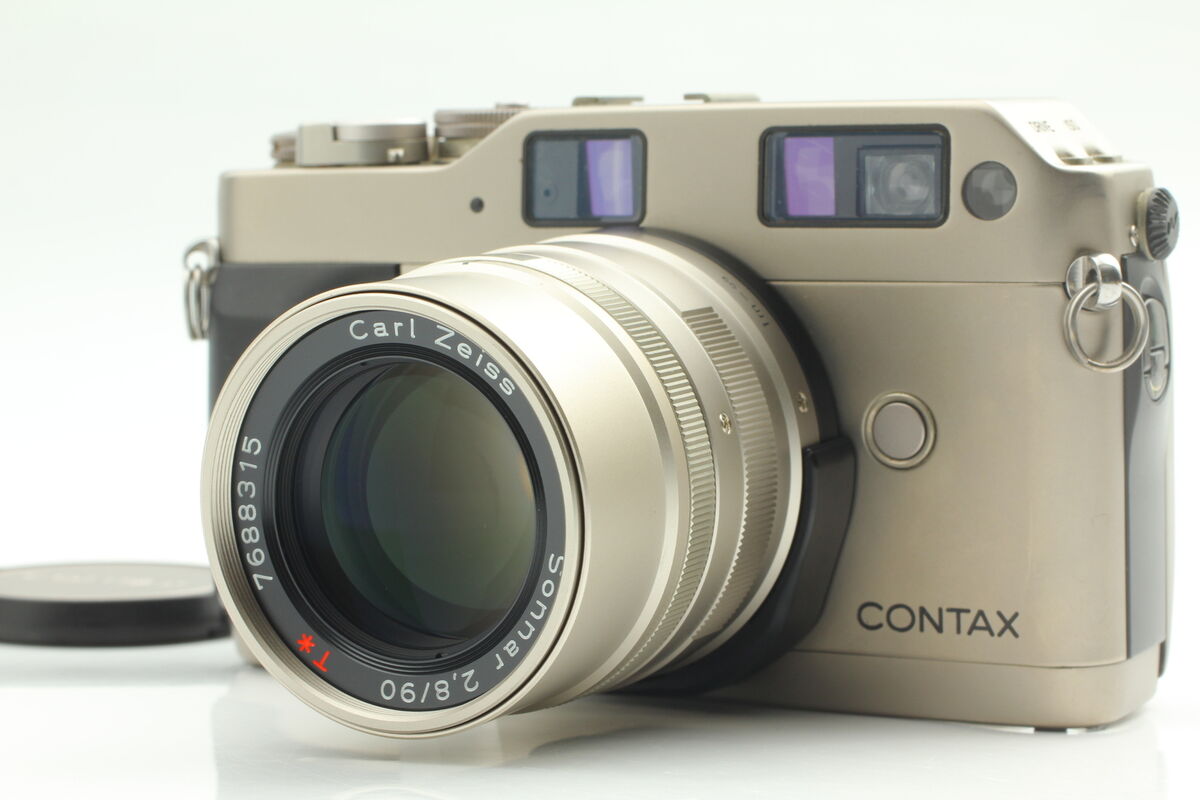
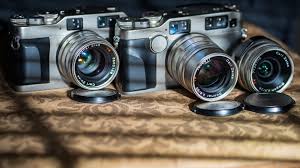
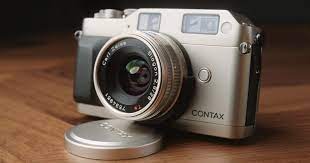
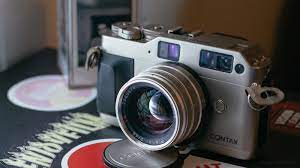
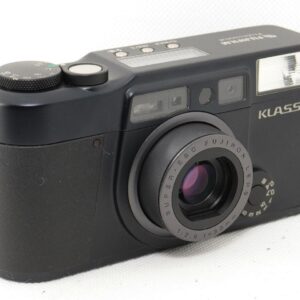
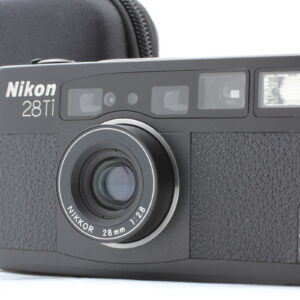
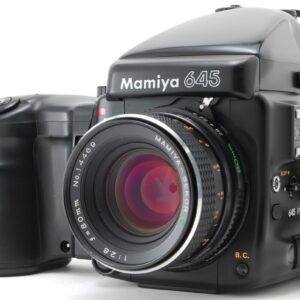
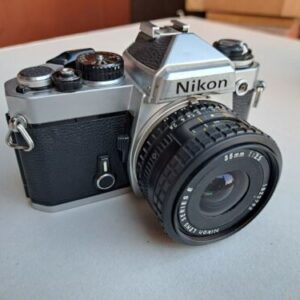
Reviews
There are no reviews yet.